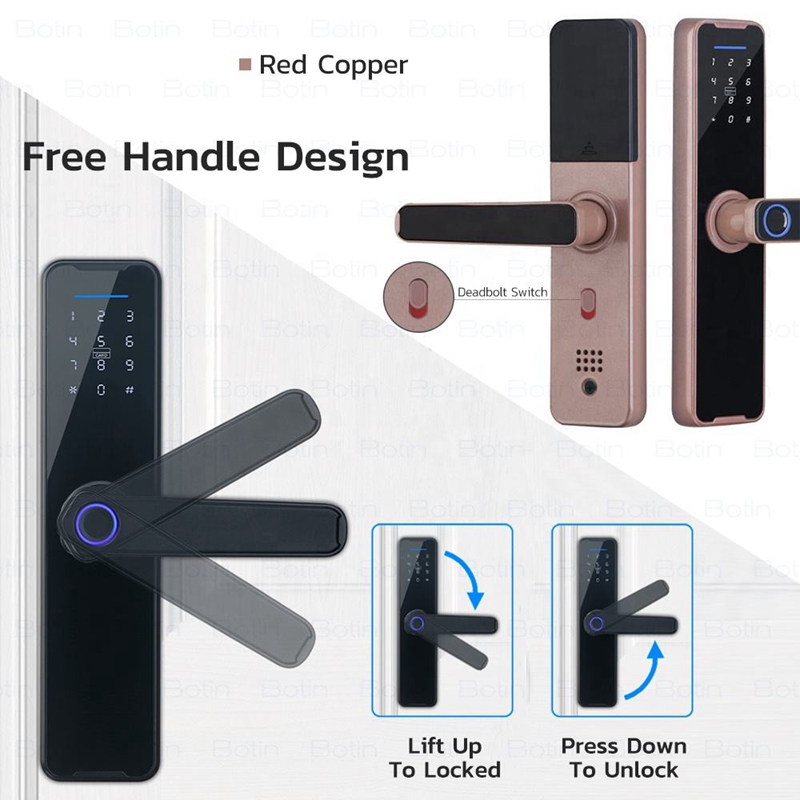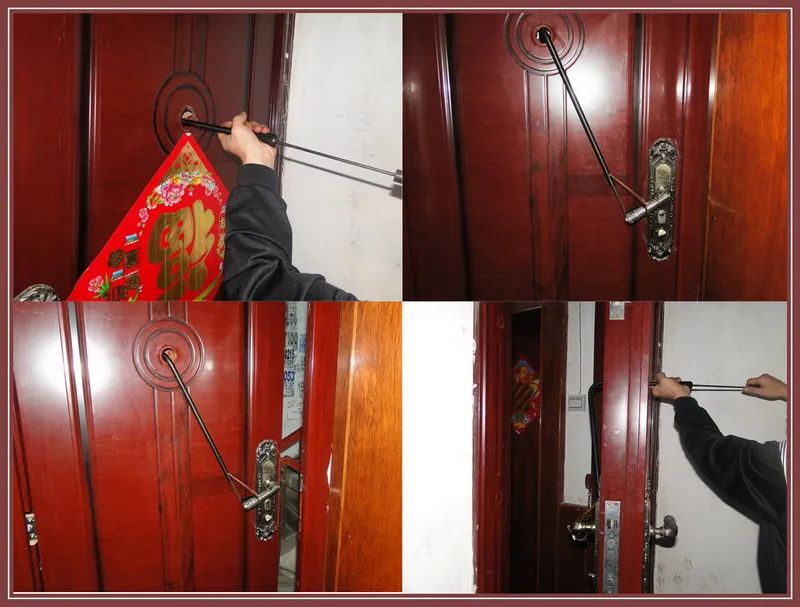When consumers browse for smart locks in stores, they often encounter salespersons introducing the “freewheeling handle” feature. Most smart lock brands with lever-style designs also incorporate this feature. But what exactly is its practicality, and what specific functions does it serve?
Firstly, let’s comprehend what the “freewheeling handle” entails.
In smart door locks, the freewheeling handle refers to the handle remaining disengaged until the correct unlocking method is employed. In this disengaged state, the handle can be grasped and rotated downward, yet it won’t affect the smart lock’s activation mechanism. Only after successfully authenticating via fingerprint, password, or other means can the motor engage the clutch, allowing the handle to unlock.
This freewheeling handle, also termed a safety handle, is exclusive to lever-style smart locks, with no counterpart in pull-type handles.
Next, what practical benefits does the freewheeling handle feature of smart locks offer?
- Prevents Damage from Forceful Entry Attempts
For regular users of smart locks, this feature might seem unnecessary, as they wouldn’t attempt to forcefully open the door after realizing it’s locked. However, for individuals with compulsions or ill intentions, this feature proves invaluable. The design of the freewheeling handle provides a sensation akin to hitting cotton with brute force, deterring attempts to break the handle and disrupt the smart lock’s functionality.
- Convenient Deadlocking
With this design, users can effortlessly engage the deadbolt by simply lifting upward after stepping out, ensuring security with minimal effort and time.
- Anti-Tailgating Functionality
When paired with a responsive and swift-chipset within the lock, the freewheeling handle can effectively deter tailgating. From verifying the unlocking method to pressing the handle to enter and finally lifting to lock, if done swiftly, it leaves no opportunity for potential intruders to exploit. Some smart locks have a delay of 5-10 seconds before re-locking after unlocking. During this interval, another person can easily open the door again. Such situations can be perilous if a criminal is tailing.
- Prevents Peephole Unlocking
For perpetrators skilled in using specialized tools to unlock doors through peepholes, even doors with high-security standards become vulnerable. Yet, with the freewheeling handle, even if an intruder clamps the inner handle using a “mechanical hand” through the peephole and exerts force downwards, the handle remains disengaged, thwarting their attempt to open the door. This feature mitigates some risks associated with indoor security breaches.
In conclusion, while the entry door lock is pivotal for indoor security, the safety assurance provided by the freewheeling handle feature of smart locks has its limitations. As one police officer remarked, if a thief wants to enter your home, whether it takes 1 minute to unlock or 10 minutes to break in, they’ll find a way. Therefore, consumers must exercise caution when selecting smart locks for their entry doors, thoroughly understanding the quality, installation, and after-sales service of the locks.
Post time: Mar-06-2024







